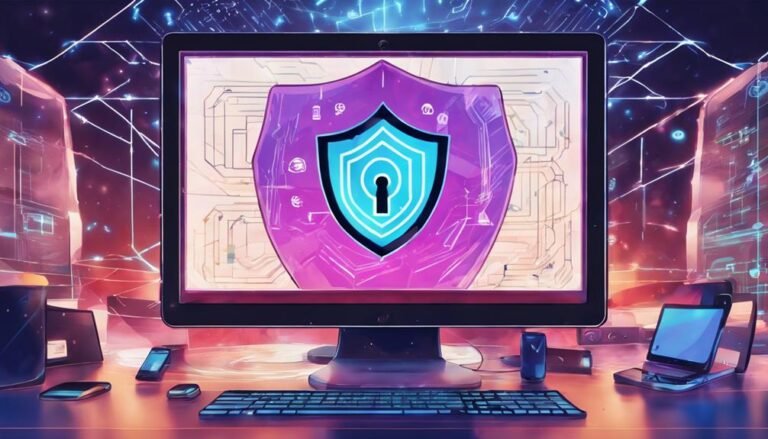How Can I Foster a Culture of Continuous Learning in Organizations?
To foster a culture of continuous learning in organizations, prioritize skills development, leadership support, knowledge sharing, diverse learning opportunities, feedback, and progress recognition. Emphasize the value of ongoing skill enhancement to remain competitive and boost morale. Lead by example, encourage open communication, and provide resources for upskilling. Foster peer learning networks, offer varied training options, and promote feedback culture. Recognize progress to motivate growth and innovation. By focusing on these strategies, you can create a dynamic environment that facilitates constant learning and development.
Key Takeaways
- Provide diverse learning opportunities for upskilling.
- Encourage leadership involvement in continuous learning.
- Foster a culture of knowledge sharing and feedback.
- Recognize and reward progress in skill development.
- Establish peer learning networks for collaboration and growth.
Importance of Continuous Learning
Continuous learning is essential for organizations to adapt and thrive in today's rapidly evolving business landscape. Emphasizing skills development and professional growth within your organization is vital for staying competitive. By continually enhancing the skill sets of your employees, you're investing in the long-term success of your company. Encouraging a culture that values learning not only boosts employee morale but also leads to increased productivity and innovation.
To foster skills development, provide opportunities for training and upskilling. Offer workshops, online courses, or tuition reimbursement programs to support employees in expanding their knowledge base. By investing in your employees' professional growth, you aren't only enhancing their capabilities but also demonstrating a commitment to their success.
Creating a work environment that promotes continuous learning can lead to a more agile and adaptable organization. Employees who are encouraged to learn and grow are more likely to contribute fresh ideas and approaches to challenges. Ultimately, prioritizing skills development and professional growth can position your organization as a leader in your industry.
Leadership Support and Role Modeling
To foster continuous learning in your organization, it's essential for leaders to lead by example, showing a commitment to growth and development.
Encouraging open communication channels allows for the exchange of ideas and knowledge sharing among team members.
Providing resources and training opportunities demonstrates a dedication to supporting continuous learning within the organization.
Lead by Example
How can leaders effectively demonstrate support and role modeling in fostering continuous learning within organizations?
To lead by example in promoting a culture of continuous learning, leaders must actively engage in learning opportunities themselves. By participating in training programs, seeking feedback, and openly admitting to their own mistakes, leaders showcase a commitment to growth that inspires others.
Additionally, leaders can encourage experimentation and knowledge sharing among team members, demonstrating that learning is valued at all levels of the organization. Through consistent role modeling of curiosity, adaptability, and a growth mindset, leaders set the tone for a workplace where continuous learning isn't just encouraged but ingrained in the organizational culture.
Encourage Open Communication
Encouraging transparent communication within an organization is essential for fostering a culture of continuous learning and development. Transparent collaboration allows ideas to flow freely, fostering innovation and growth.
By promoting open communication channels, you create an environment where employees feel comfortable sharing their thoughts, concerns, and feedback. Active listening plays a pivotal role in this process. Leaders who actively listen to their teams demonstrate respect and create a safe space for dialogue.
Encouraging open communication not only enhances teamwork but also allows for the exchange of diverse perspectives, leading to creative problem-solving and increased learning opportunities.
Embracing transparent collaboration and practicing active listening are key strategies for building a culture that thrives on continuous learning.
Provide Resources and Training
By providing robust resources and tailored training programs, leaders can actively support and role model a commitment to continuous learning within their organizations. Offering online courses and workshops allows employees to access learning opportunities conveniently and stay updated on industry trends.
Additionally, investing in skill development and certifications demonstrates a dedication to enhancing employees' expertise and fostering a culture of growth. Leaders can strategically align training programs with organizational goals, ensuring that learning initiatives contribute to overall success.
Encouraging Knowledge Sharing
To encourage knowledge sharing in your organization, consider implementing peer learning networks that allow employees to exchange expertise and insights.
Additionally, providing cross-functional training opportunities can facilitate the transfer of knowledge across different departments, enhancing collaboration and problem-solving skills.
Emphasizing the value of sharing knowledge not only boosts individual growth but also fosters a culture of continuous learning within your organization.
Peer Learning Networks
Creating dynamic peer learning networks within organizations can greatly enhance knowledge sharing among employees. By fostering collaborative learning environments and promoting a culture of knowledge exchange, organizations can benefit from a more informed and skilled workforce.
To effectively implement peer learning networks, consider the following:
- Establish clear objectives: Define the purpose and goals of the peer learning network to guarantee alignment with organizational objectives.
- Encourage active participation: Motivate employees to engage in discussions, share insights, and contribute their expertise to the network.
- Provide resources and support: Offer tools, training, and guidance to facilitate knowledge sharing and collaborative learning within the network.
- Recognize and reward contributions: Acknowledge and appreciate individuals who actively participate and add value to the peer learning network.
Cross-Functional Training Opportunities
Encouraging knowledge sharing through cross-functional training opportunities can facilitate a multidisciplinary approach to learning within organizations. By providing employees with the chance to participate in training sessions outside their usual roles, you promote skill development and enhance team collaboration.
Through cross-functional training, individuals can acquire new skills that may not be part of their daily responsibilities, leading to a more versatile and adaptable workforce. This approach encourages employees to understand different perspectives, learn from one another, and collaborate effectively across departments.
It not only broadens individual capabilities but also fosters a culture of continuous learning where knowledge is shared organically, nurturing innovation and problem-solving skills across the organization.
Providing Learning Opportunities
Enhancing employee skills through diverse learning opportunities fosters a culture of continuous improvement within organizations. Providing various avenues for personal development and skill enhancement is vital for nurturing a workforce that's adaptable and innovative.
To create a culture of continuous learning, consider the following strategies:
- Online Learning Platforms: Offering access to online courses and resources allows employees to upskill at their own pace and convenience.
- Mentorship Programs: Pairing employees with experienced mentors enables knowledge sharing and fosters professional growth.
- Cross-Departmental Projects: Encouraging collaboration across different departments provides employees with diverse learning experiences and helps them understand the broader organizational context.
- Internal Workshops and Training Sessions: Conducting regular workshops and training sessions on relevant topics keeps employees engaged and ensures their skills are up to date.
Embracing Feedback and Reflection
To foster a culture of continuous learning, organizations must actively embrace feedback and reflection as integral components of professional development. Creating a feedback culture where individuals are encouraged to give and receive constructive feedback is essential for growth. Feedback provides valuable insights into areas of improvement and helps individuals understand how their actions impact others. By incorporating regular feedback sessions into your team's routine, you create a supportive environment where everyone is committed to each other's growth.
Reflection is equally important in the self-improvement journey. Encouraging employees to take time to reflect on their experiences, successes, and failures allows for deeper learning and personal growth. Reflection enables individuals to identify patterns in their behavior, set new goals, and make informed decisions moving forward. Organizations can promote reflection by providing dedicated time for employees to ponder on their experiences and learnings.
Recognizing and Rewarding Progress
Incentivizing progress through recognition and rewards is a strategic approach to reinforcing a culture of continuous learning within organizations. Recognizing achievements and incentivizing growth are vital components in driving motivation and engagement among employees. By acknowledging and rewarding progress, you can cultivate a work environment that values learning and improvement.
Here are some key strategies to effectively recognize and reward progress:
- Implement a formal recognition program that highlights individual and team achievements.
- Offer personalized rewards that cater to the preferences and interests of employees.
- Create opportunities for advancement based on skill development and learning milestones.
- Encourage peer-to-peer recognition to foster a culture of appreciation and support.
Conclusion
To foster a culture of continuous learning in organizations, leadership support, knowledge sharing, learning opportunities, feedback, and recognition are key.
By embodying a commitment to growth and development, you can inspire others to do the same.
Embrace a culture that values progress and innovation, and watch as your organization thrives in a dynamic and ever-evolving landscape.
Keep pushing boundaries, keep seeking knowledge, and keep growing together.







